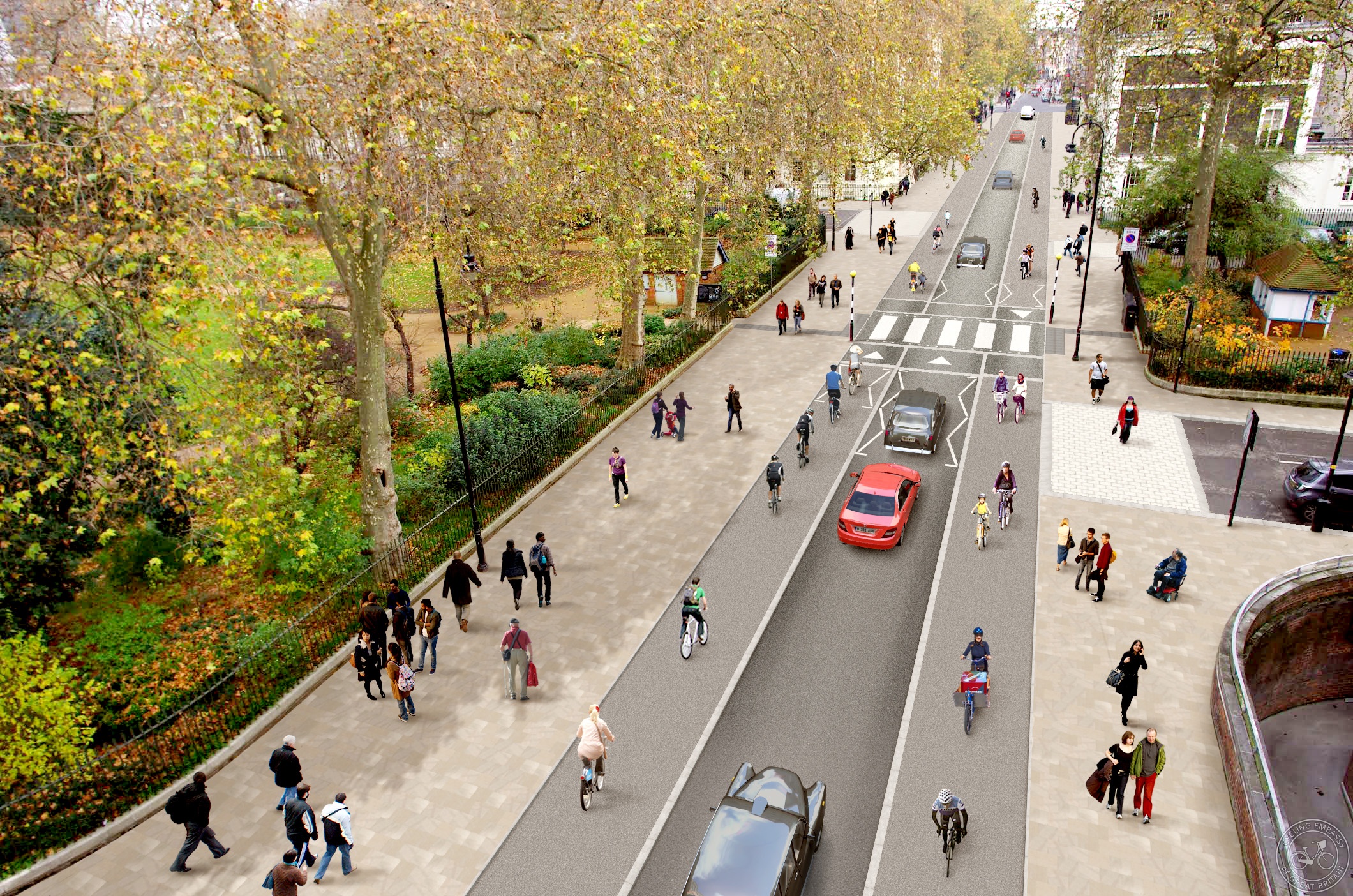Response to Tavistock Place Consultation

The Cycling Embassy of Great Britain was founded in 2011 with the aim of disseminating best practice in well-designed and properly-implemented dedicated cycling infrastructure, to enable everyone to cycle. It is run by volunteers and funded entirely by donations. The Embassy has over 1,000 ‘ambassadors’ and is affiliated to a number of major national cycling campaigns.
Below is our response to Camden's consultation on the Torrington Place/Tavistock Place consultation.
Question 6: We would like the current street layout to become permanent.
Question 7: We would not like the street to return to its pre-trial layout.
We support the trial layout becoming permanent for the following reasons -
- The new arrangement greatly reduces the amount of motor traffic passing through the streets in question, while still allowing access. This arrangement has reduced air pollution, and has made the environment safer, quieter and more pleasant for everyone.
- The previous arrangement - a 2.5m wide two-way cycle track - was congested and dangerously narrow, resulting in a number of collisions. It was not able to cope with demand.
- The new layout – two separate uni-directional cycleways on each side of the road – is now able to cope with existing demand for cycling on this route, as well as reducing potential conflict. It will also allow side-by-side cycling - for instance by parents with children - as well as allowing overtaking.
- The new arrangement will be better for pedestrians too; footways will be widened, and the street will be safer and easier to cross, not only because motor traffic levels are greatly reduced, but also because the layout of the road will be simplified.
More detailed comments
While we strongly support the proposals overall, we do have a number of critical comments.
- We do not support a loading bay being placed on the cycleway itself (on Torrington Place). Parked vehicles on the cycleway will necessitate people merging into motor traffic on the road, which is neither safe, nor attractive enough for inclusive cycling.
- Several of the side roads in the scheme should have continuous (or 'blended') footways across them, to reinforce pedestrian priority, and encourage driver caution. (For a good London example, see either Magee Street on CS7 in Lambeth, or Bromell's Road/The Pavement, in Clapham)
- We recommend the use of red asphalt to make the cycleways visually distinct from the road, rather than a painted surface. This is smoother to cycle on, as well as longer-lasting, requiring less maintenance.
- There is a need for greater separation at Byng Place – firstly, between pedestrians and people cycling in an eastbound direction, to reduce conflict (this is currently a 'shared surface', without any visual distinction between walking and cycling), and secondly, between people cycling westbound and westbound motor traffic.
- The signalised junctions require careful consideration on how to prevent turning conflicts, and to enable right turns for people cycling – in particular, at the Bedford Way, Woburn Place and Marchmont Street and Judd Street junctions, with the latter a particular 'left hook' risk.
- The width of the cycleways should be at least 2.5m - this is the stipulation in Transport for London's London Cycle Design Standards for cycle flows of 800 per hour at peak.
